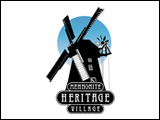Manitoba Conservation will hold public open house meetings to inform the public of options available for containing further spread of the European gypsy moth, which has been identified in areas of St. Germain and La Salle.
The European gypsy moth was accidentally introduced to the United States in 1869. It spread throughout the northeast United States to Quebec and Ontario in the 1970s and into the Maritimes in 1981.
A sustained infestation of Gypsy moths could also have a significant damaging impact on Manitoba’s urban and wildland forests.
Gypsy moth caterpillars feed on tree foliage. Hardwood trees such as oaks are preferred but the moths feed on poplar, birch, numerous other tree species and many shrubs and evergreens as well. Similar to forest tent caterpillars, high populations of gypsy moths can completely strip leaves from trees. Broadleaf trees will produce a second set of leaves that year but stripping of leaves over a number of years can result in tree death or make them more susceptible to other pests.
This could change the nature of Manitoba’s hardwood river-bottom forests, already significantly impacted by Dutch elm disease. If Manitoba cannot control this pest, the Manitoba nursery and landscape industry could be affected as restrictions could be placed on its exports.
An all-natural (organic) biological control product BTK is proposed for application in selected areas of St. Germain and La Salle.
Bacillus thuringiensis subspecies kurstaki or BTK is a bacterium that occurs naturally in soils worldwide. It has been used as a biopesticide to control forest caterpillar pests since the mid 1970s. It targets only lepidopterans (moth and butterfly species) that are in the larval stage at the time of spraying. The larvae (caterpillar) must feed on the leaves (foliage) at the time of the spray application of BTK in order to be affected and die off. BTK is approved for organic and non-organic farming, urban and park use.
Agriculture News Archives



